Companies are making big money on social media.
And you can too.
The trick to social media marketing is knowing the foundations of what makes it work so well. Making money for your business is a huge pro (and what might be your goal on paper), but social gives companies an opportunity that was harder to come by before smartphones became our best friends.
With social media, you can develop a relationship with your audience in a way that wasn’t possible before Facebook went viral. We get to use social media to talk to our audience and show them we really know our stuff. The right social media marketing strategy speaks to your cold, warm, and hot leads on one platform.
And that’s what leads to revenue.
When people see you as more than a company with a fancy logo and more as a relatable expert in your field (B2B or B2C!), businesses thrive. We’ve seen established businesses use social to increase their audience reach, and we’ve also seen companies come from using social (for example, influencers launching merch shops).
Let’s go over the basics of what social media marketing is to build on a rock-solid foundation.

What is Social Media Marketing?
Social media marketing is a strategy that uses social media platforms to connect with your customer avatar and bring them through the Customer Value Journey. The Customer Value Journey is the 8-step process a customer goes through, from finding out your brand exists to becoming a raving fan of your products or services.
Here’s what the Customer Value Journey looks like:
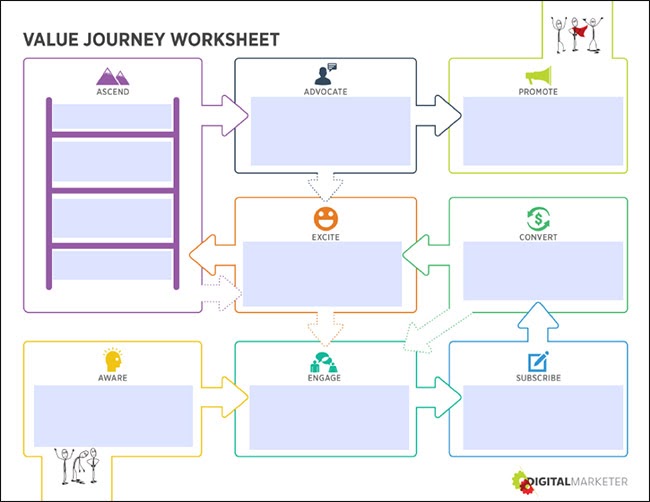
With social marketing, you’re going to target customers in the first 2 stages of the CVJ, Aware and Engage. Generate awareness of your brand and your marketing campaigns and get your customer avatar to engage with your content (blog posts, podcast episodes, etc.) by driving them to your website.
These are the basics of social media marketing that you think of when you decide to launch your strategy. But, there are other pros to having a social audience. You can use your audience to discover what your customer avatar wants to learn about and what topics interest them. Using that knowledge, you can create content around it, lead magnets, or paid products.
You can also use your social audience as a testing ground for paid campaigns. Test out copy and ad creatives on your social feed to see how your audience reacts. The content that has the most engagement, views, or conversions is exactly the content you want to put ad dollars behind.
Social media marketing is a huge opportunity for most businesses. Even the most niche industries can find their customer avatars online. But that doesn’t mean they have to.

Do You Need to Use Social Media Marketing?
It’s easy to say yes to this question and pretend that everybody should be using social. We’ll say confidently that 90% of companies should use social, but there is a small percentage that shouldn’t.
If these are your goals for your business (or the company you work for), implement a social media marketing strategy:
- You want more leads and customers
- You need more revenue
- You’re looking for more social proof
This is why 90% of businesses have the green light to start a social media strategy. What business doesn’t want more leads and customers?
Well, that brings us to who shouldn’t start a social media marketing strategy. If your business is feeling like any of the below, your social strategy should wait while you fix the leaking holes:
- You can’t keep up with the demand for your products or services
- You don’t have the capacity to give your customers a 5-star experience
- You’re a one-person show and you don’t have any extra time
If any of these are the case, it’s way more important for you to spend your time plugging those leaking holes (by creating systems, delegating and hiring, simplifying your packages, etc.). Once you can keep up with demand, continue to give your customers a 5+ star experience, and have the time to create high-quality, useful content—then you can implement your social media marketing strategy.

How to Build a Social Media Strategy
Most businesses make 4 critical mistakes when they start their social strategy:
- They treat social media marketing as a single discipline (there are 4 equally important parts)
- They use social media as a one-way street, essentially just shouting at their audience
- They jump straight into trying to make a sell (it’s all about providing value first and often creating multiple touchpoints)
- They fail to tie social media marketing to overall marketing goals and don’t align with content marketing and promotions
We call those 4 important parts of social media marketing The Social Success Cycle. This is the cycle that helps you avoid shouting into the void or seeing a 0% CTR. It all starts with Social Monitoring & Listening.
The Social Success Cycle: Social Monitoring & Listening
Social monitoring and listening monitors and responds to customer inquiries and listens for important trends and topics. Here’s what you’re doing in this part of your social strategy:
- Monitor for and respond to brand mentions (positive and negative!)
- Listen for conversations around relevant industry topics and engage when you can add to the conversation
- Find content inspiration based on what your audience is talking about or wants to know more about
- Monitor for feedback and listen for key trends to improve your product or service
The Social Success Cycle: Social Influencing
Social influencing establishes authority in your industry by posting and sharing relevant and valuable content. You want to use your content to provide *BIG* value to your audience. This value is important because it’s building authority within your industry. When your audience reads your content and thinks, “Wow, they really know their stuff!” or “This company just GETS what my problem with [insert pain point here] is!” that’s when you’ve nailed it.
You want your audience to see you as a valuable resource and continue to engage with your content. They’ll share your content and brand with their audience and expand your reach (creating more customer avatars that can enter the Customer Value Journey at the Awareness stage).
The Social Success Cycle: Social Networking
Social networking engages and builds relationships with valuable brands and influencers in your industry. This might sound like an uphill battle now since you might not have a huge audience, but we have a strategy to help you get the ball rolling.
- Start by sharing valuable content from other industry influencers and brands
- Create a list of brands and experts in your industry that you’d like to build relationships with
- Build communication templates and reach out to them where they are most active
- Create mutually beneficial relationships
- Focus on WHAT and WHERE your audience will find the most value (for example, sharing tips via an Instagram takeover, going Live on Stories, Facebook, etc.)
The Social Success Cycle: Social Selling
Social selling generates leads and sales by connecting a seeking audience with your products and services. This is the part of your social media strategy where you’re running ads to content pieces, lead magnets, and your products. It’s the part tempting you to jump in the deep end of social media… the same day you launch your strategy. But, now you know—there are 3 other very important parts of The Social Success Cycle. Sales is definitely one of them, but it’s not the only one.
Here are some tips for social selling:
- Focus on engaging your audience and speaking to the benefits of your product or services
- Attention-grabbing graphics and videos
- Maintain your consistent brand voice and showcase your personality
- Splinter relevant content into engaging chunks and use calls-to-actions to compel your audience to want to learn more
- Provide value even with your sales’ posts
That’s the foundation of building your social media strategy. Now, let’s look into what your social profiles will look like and what you’ll actually be publishing.

The 4 Types of Social Content
Time to pull out the Customer Value Journey again. Our social content revolves around 5 stages of the CVJ:
- Awareness
- Engagement
- Subscription
- Advocating
- Promoting
At each stage, you’re creating a specific type of content suited for your customer avatars at that stage of their journey with you.
Social Content Type #1: Awareness
Someone can only buy from your brand if they know you exist. That’s what the awareness content is focusing on—telling people what you do and who you do it for. Build complete profiles and be active on the channels where your potential customers are. You can also run brand-building ads with this type of content.
Your homework for this type of content creation is to:
- Build and optimize your social profiles for your customer avatar
- Create relevant content that explains what you do, who you do it for, and shows your expertise
Social Content Type #2: Engagement
We don’t stand behind vanity metrics. Having one million followers is great but if only 1% of those followers engage with your brand, what was the point of getting all that Awareness content in front of those people? Focus on building an engaged audience instead. Having 1,000 followers with an 80% engagement rate doesn’t look as fancy on paper, but it sure looks great in your bank account.
Here’s your homework for engagement content is:
- Create relevant and valuable content
- Optimize each post to encourage engagement (comments, shares, clicks, saves, etc.)
- Combine a compelling visual or video with engaging copy and strong calls-to-action
Social Content Type #3: Subscription
As Ryan Deiss, CEO of DigitalMarketer, always reminds us, own your audience. Algorithm changes can wipe out your ability to reach your audience on socials. You can’t have all of your eggs in one basket if you plan to have a steady, long-term business. You need to take your engaged audience and move them off of social and into your email list.
After providing value and getting your audience to engage, you can strategically get their contact information. You can do this with social media contests (just beware that you’re making sure to bring in quality leads) and by running ads.
Here’s your homework for subscription content:
- Splinter your subscription content into a valuable post
- Use your copy to generate interest for the opt-in
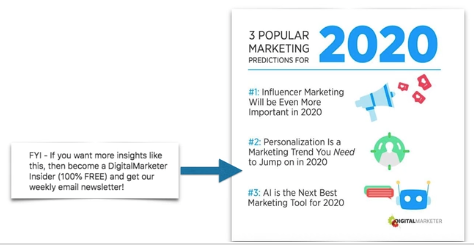
Social Content Type #4: Advocating and Promoting
Fast forward to the last two stages of the Customer Value Journey, and we’re creating content with help from our brand advocates and promoters. These customers are so happy with our 5-star experience, they want to tell the world about it (we LOVE these customers). This type of content repurposes positive reviews and customer stories and even uses customer testimonials as ads.
Here’s your homework:
- Engage with happy customers and encourage positive reviews
- Turn your positive reviews into social media posts, share customer success stories, and even post testimonials
- Get permission to use reviews on your social channels
- Use email marketing to encourage reviews
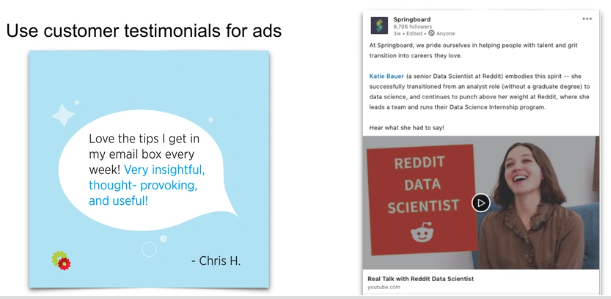
We know how tempting it is to make social media marketing more complex than this. We see the gears turning in your mind but we want to slow them down. This is the basics of social media marketing and exactly where you should start as a brand new to social. Don’t get super fancy with your content just yet, or worse, get Shiny Object Syndrome that turns into analysis paralysis.
These are the 4 types of content you need to create, so just focus on publishing them. You can add in more content later as your brand evolves and you see how certain content impacts your success metrics.

What Social Media Success Metrics to Track
We talked a bit about vanity metrics, but now it’s time for a deep dive. Vanity metrics are any metrics that look great on paper but don’t help you reach your goals. We see companies going after vanity metrics when they haven’t *really* figured out their social media marketing goals.
Let’s audit your current social media marketing efforts with these questions:
- What social media channels are you currently posting on?
- Why did you choose those channels? Is your audience even on those channels?
- Do you have a complete business profile with bios, relevant links, searchable name, branded profile and cover photos?
- How often are you posting per week?
- What type of content are you posting? What’s the content mix (how many videos, photos, link shares, stories)?
- Are you getting engagement on your posts?
- What types of engagements are you getting? Comments, shares, saves, clicks, etc.?
Once you’re clear on what you’ve been doing (and why it hasn’t been working), it’s time to set trackable, relevant goals based on what YOU need from your social media marketing strategy. Not what your competitors need, not what that random marketing stranger told you that you needed, or what that internet-famous person’s tweet told you to do.
Align your social media goals with your business and marketing goals. Your goals can be one, some, or all of these:
- Increase brand awareness and authority: This is the TOP reasons marketers use social media
- Drive traffic to relevant content: If you post a lot of valuable content you can use social media to drive traffic
- Generate new leads: Best for businesses with a long sales cycle to create a warm audience
- Social Selling: Valuable goal for short sales cycles and ecommerce brands alongside paid advertising
- Build a community of advocates: Useful for brands that already have a lot of brand recognition
Based on your goals, you’ll narrow down which metrics reflect those goals. For example:
- If you’re trying to increase brand awareness and authority, followers and impressions are the metric you’ll focus on
- If you want to drive traffic to relevant content, click-through rate is going to be your favorite metric to pay attention to
- If you’re looking to generate leads, you’ll focus on your subscriber conversion rate
- If you want to sell products or services, you’ll be looking at sales conversions
- If building a community of advocates is your goal, engagement is going your metric of choice
Don’t get caught up in vanity metrics, in social media marketing or any digital marketing. They’re tempting, so watch out. Remember what really matters and focus on improving those metrics with the 4 types of content we talked about above.
It’s going to be tempting to stack more social media platforms on your content strategy like you’re playing a game of Jenga. Unfortunately, that Jenga pile is going to come falling down on you if you take on more than you, or your team, can handle. Make sure that you’re not trying to be on *every* social platform that exists and comes out. Instead, focus on where your audience is. Here are our tips for how to do well on major social platforms.

Tips for Major Social Platforms
Facebook:
Use Facebook for paid ad reach and get really familiar with their ad platform. Facebook is great for targeting a specific audience based on buying behavior and interest. They get extra points for owning Instagram, which makes your advertising a bit easier since you can promote across both platforms.
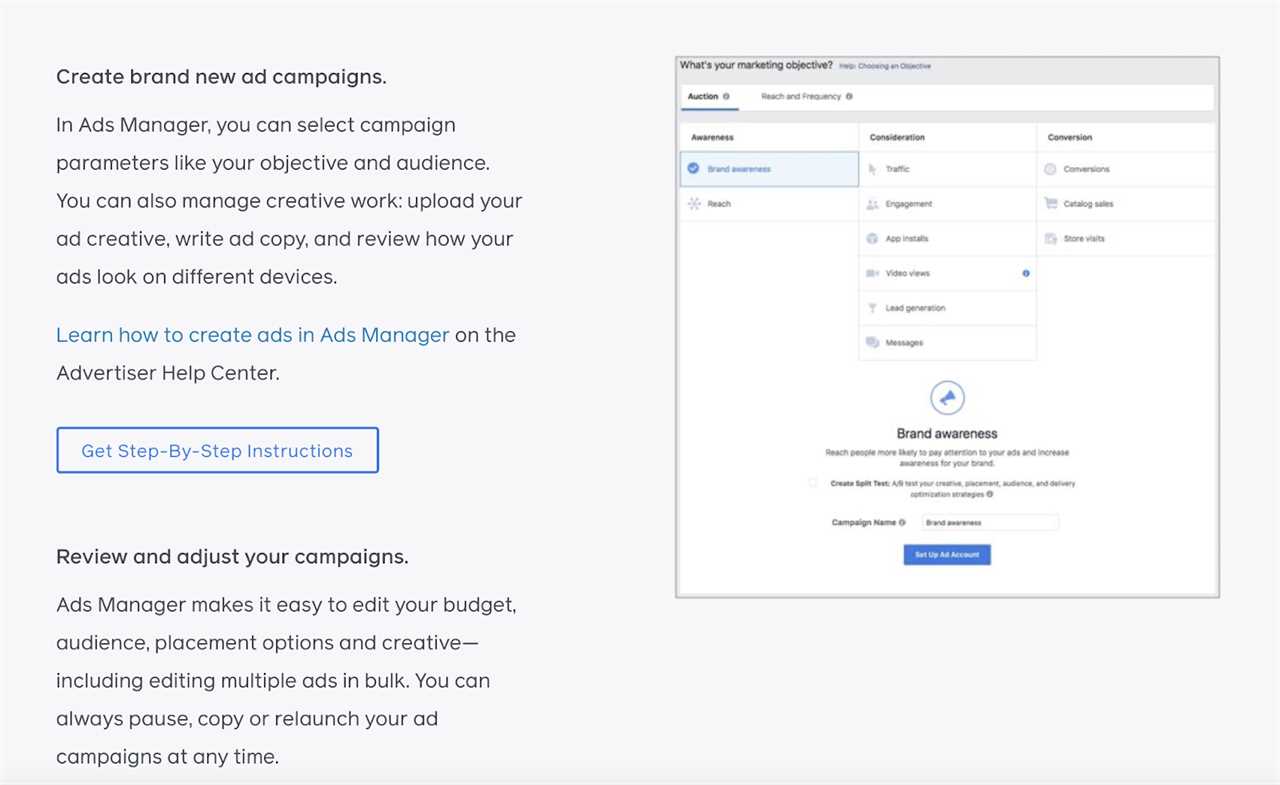
Instagram:
Create how-to guides, highlight more than one testimonial at a time, or cover a lot of content in a little amount of space using Instagram’s multiple photo publisher. End each of these posts with a call to action to subscribe to a newsletter to learn more about this topic or opt-in for a lead magnet.
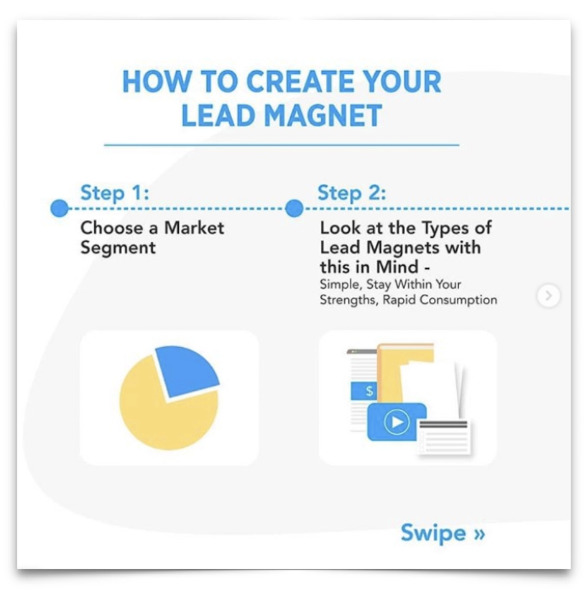
Twitter:
Use Twitter as your primary social listening channel. Chris gave us the brilliant idea of taking clips from our podcast episodes to share with our audience. Using social listening, we can tap into what our audience wants to see from us and what they want us to talk about.
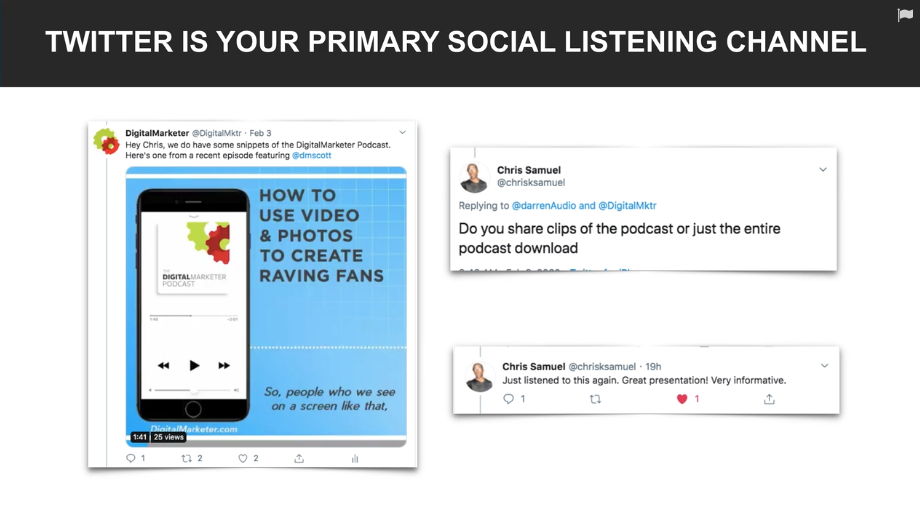
YouTube:
Make sure to add a call to action to your YouTube videos. As the second largest search platform (second to Google), people on YouTube are generally looking for an answer to their question. Your videos will answer their questions and show them where they can really solve their problem. You can also apply this to Pinterest. People on YouTube and Pinterest are in the “Seeker” Mindset, looking to find something specific.

TikTok:

Don’t fall into the trap of thinking your social audience isn’t on TikTok. There are channels dedicated to plumbing and mixing paint. Make sure that you’re telling your TikTok audience where they can learn more about your products in your videos because you won’t be able to add a link to your profile until you have 10,000 followers.

Common Social Media Terms (And What They Mean)
Average Customer Value: The average order size multiplied by the average order frequency tells you how much to expect from an average customer (this helps you figure out how much budget you have for an organic and paid social strategy).
Call to Action: The action you want someone to take after reading, watching, or listening to your content (it can range from liking a post, to subscribing to an email list, to buying a product).
Click-Through Rate: The number of clicks organic or paid content received divided by the number of impressions and multiplied by 100 to get the percentage (this tells you what percentage of viewers are clicking through to your content).
Cold Traffic: People in your target audience who don’t know anything or much about your business (they’re moving towards or in the Aware stage of the Customer Value Journey).
Comments: People who have commented on your social post.
Core Offer: The main product or service you’re selling in a sales funnel.
Cost Per Click: How much you pay a publisher (like a website, social media platform, etc.) each time one of your ads is clicked (also called Pay-Per-Click, PPC).
Cost Per Lead: How much you pay for every lead you get from a social media platform (or another advertising platform, ex. Google).
Engagement: The number of times a post was ‘engaged’ with, usually defined as like, comments, shares, and saves (but depends on the platform)
Followers: The number of people who follow your brand account (as seen on your profile under “Followers” on most social platforms)
Hot Traffic: Audience members who fit your customer avatar description and are in the Subscription stage of the Customer Value Journey ready to convert.
Impressions: The number of people who saw a post, in total.
KPI: The abbreviation for Key Performance Indicators used to track the success of a business or marketing initiative (example, a social media marketing strategy).
Lead: Someone aware and engaging with your brand that has qualified themselves as your customer avatar (they qualify themselves by showing interest in specific types of content).
Lead Magnet: A value-driven piece of content that is worth the subscriber giving their email address in return for. The lead magnet goal is to maximize the number of targeted leads you are getting for an offer.
Messenger: Facebook’s messaging app that can be used alongside bots and other marketing strategies.
Organic Content: Content posted to an account without any ad dollars put behind it (to increase impressions).
Organic Social Media Marketing: Posting to a social account without the use of paid ads with content only being seen by people who follow the account (and other users who the social platform decides to show the content to on discovery pages)
Paid Content: Content that has paid ad dollars behind it to boost impressions, have it seen by a specific audience, etc.
Paid Social Media Marketing: Using paid ad platforms to boost impressions on content and target specific audiences based on interests, locations, demographics, buying behavior, and more.
ROI: The abbreviation for Return on Investment, used to figure out how much money was made on a marketing strategy (ex. Paid ads).
Shares: The number of people who have shared your content with their social network.
Warm Traffic: Audience members who have recently started to engage with your content by reading, watching, liking, commenting, etc., and are in the Engagement stage of the Customer Value Journey.
As you scroll and see other companies making *big* money on social, it’s time to realize that opportunity is there for you too. With your new knowledge, you can start to create the 4 types of social posts that will build your audience and get conversions.
Remember, everybody was new to social marketing at some point. Even the world’s largest companies had to figure out how to get started posting relatable and valuable content.
Moving forward, you’ll only learn more about your audience, what social content they want to see from you, and how you can use that to give a 5-star customer experience (that drives more sales!).
The post Everything You Ever Needed to Know About Social Media Marketing appeared first on DigitalMarketer.






